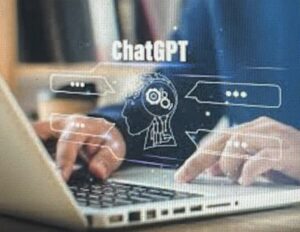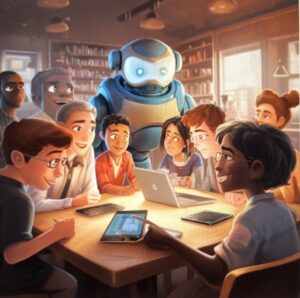Assigned Blog Post 10
Let us not go further. I am choosing ChatGPT as the AI Tool in today’s blog post. It might be the obvious choice, but even thinking that it is an obvious choice speaks to the usefulness of this tool. In an era of technological advancements, artificial intelligence (AI) continues to revolutionize various facets of life, especially education. For this blog post assignment, I explored an AI tool and delved into its potential applications in the classroom. This reflective journey explores how AI technology can enhance teaching practices, support diverse learning styles, and foster critical thinking and creativity while addressing ethical and practical considerations.
AI Tool Exploration
For this exploration, I delved into the unique features of ChatGPT, an AI-powered chatbot that enables dynamic and interactive conversations. Its advanced natural language processing capabilities piqued my interest, leading me to consider its potential in educational settings. I envisioned it as a tool to enhance student engagement, foster personalized learning experiences, and open new avenues for classroom innovation.
 Enhancing Teaching
Enhancing Teaching
PracticesChatGPT presents a myriad of opportunities to augment teaching strategies or pedagogies. Through personalized interactions, teachers can tailor content delivery to individual learning styles, provide instant feedback on assignments or inquiries, and engage students in meaningful dialogue beyond conventional classroom settings. By leveraging AI technology, educators can create dynamic and responsive learning environments that cater to diverse student needs and preferences.
Supporting Learning Diversity and Critical Thinking
The adaptive nature of ChatGPT accommodates different styles by offering varied modes of interactions, visual aids, and customized responses. This AI tool can cater to auditory, visual, and kinesthetic learners, fostering a more inclusive and engaging learning experience. Furthermore, ChatGPT’s capacity to prompt critical thinking through open-ended questions, problem-solving scenarios, and collaborative discussions encourages student autonomy, creativity, and higher-order cognitive skills development.
Ethical and Practical Considerations
While integrating AI tools like ChatGPT holds excellent potential for educational advancement, ethical and practical challenges must be addressed. Privacy concerns, data security, biases in AI algorithms, and overreliance on technology are critical considerations that educators must navigate. Ensuring transparent communication with students about using AI tools, establishing clear guidelines for ethical AI usage, and monitoring the impact on learning outcomes are essential steps to mitigate risks and promote responsible AI use in the classroom.
Reflecting on my exploration of ChatGPT and its possibilities for educational Innovation, I am struck by AI technology’s transformative impact on teaching and learning practices. Embracing AI tools like ChatGPT open doors to creativity, collaboration, and personalized learning experience that cater to diverse student needs. By navigating the ethical and practical challenges, educatos can harness the power of AI to cultivate a dynamic, Inclusive and future-ready classroom environment that nurtures critical thinking, creativity and lifelong learning.
